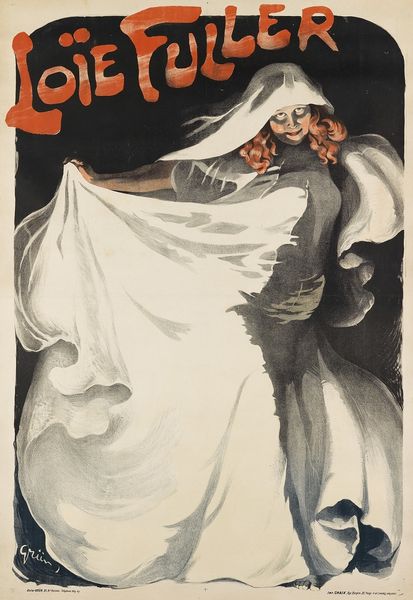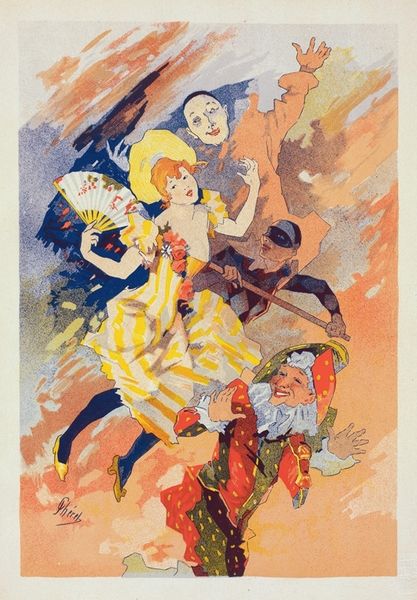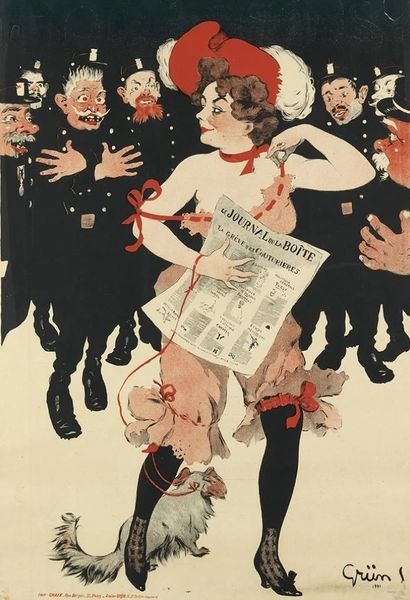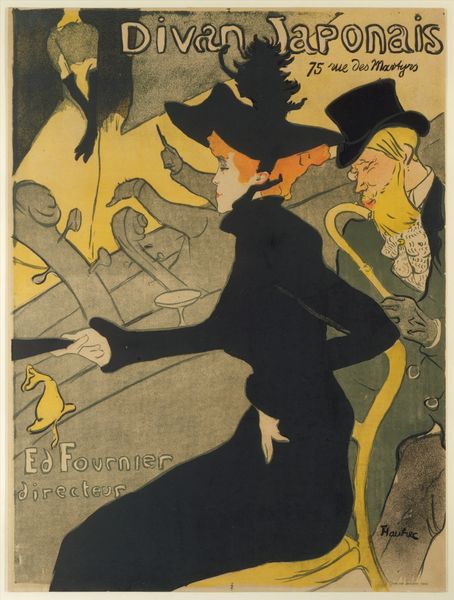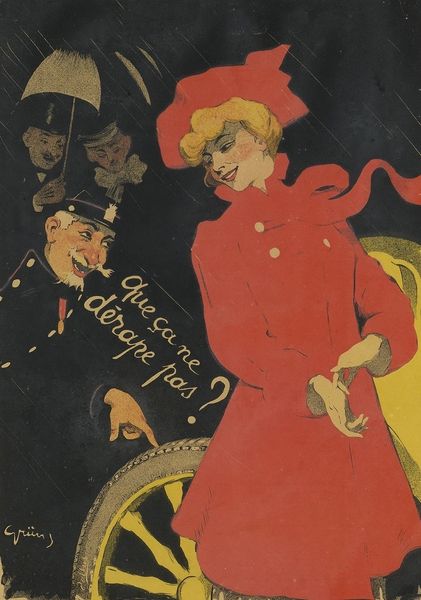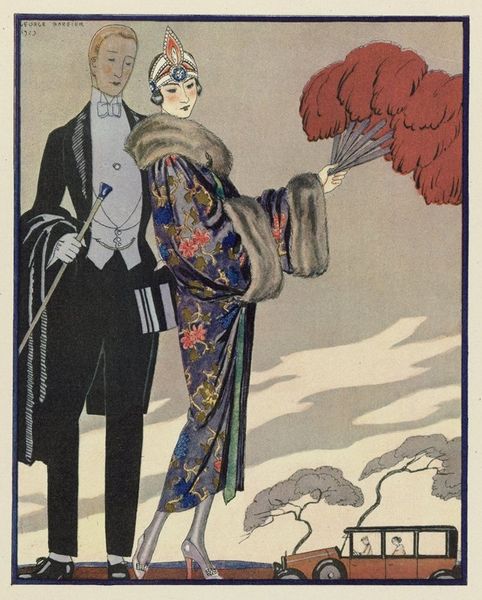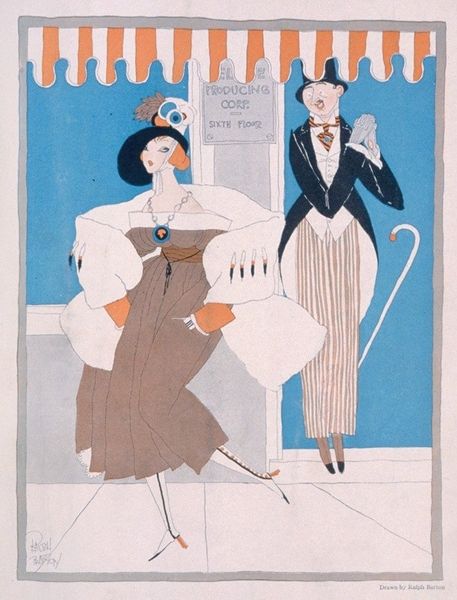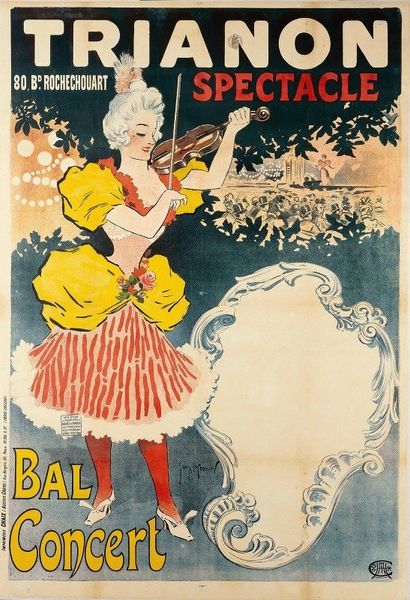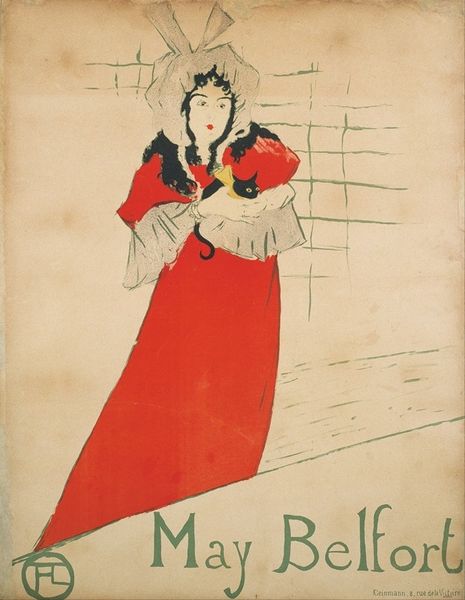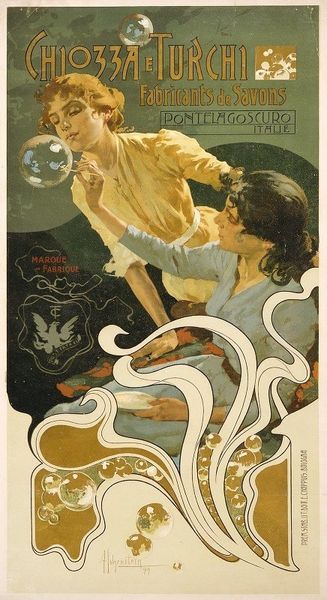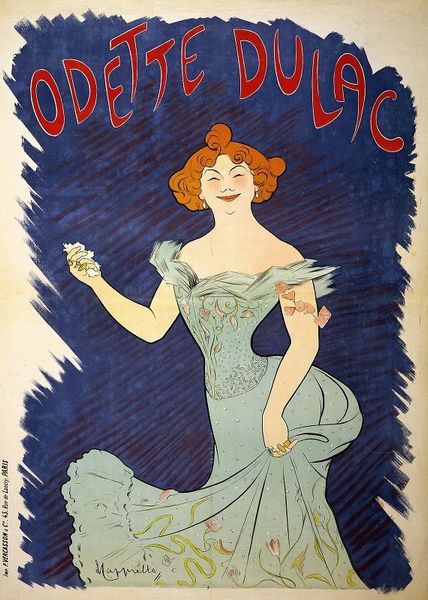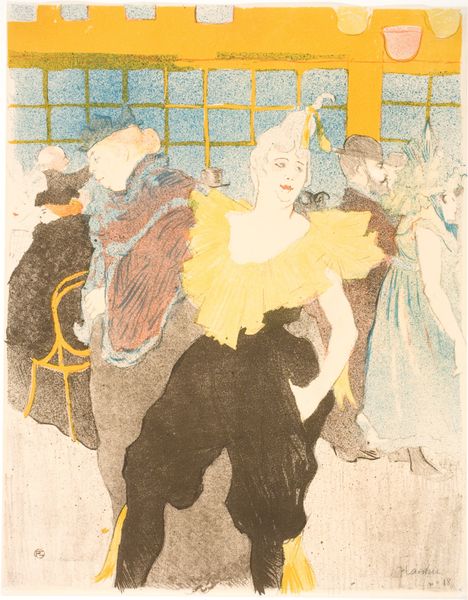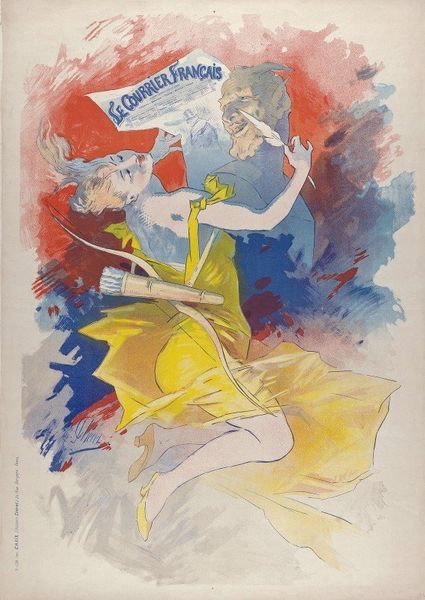
lithograph, poster
#
art-nouveau
#
lithograph
#
caricature
#
figuration
#
cityscape
#
poster
#
watercolor
Copyright: Public Domain: Artvee
Curator: What a dynamic image! The swooping curves give it a wonderful sense of flow and joyful chaos. Editor: Indeed. This is Jules Chéret's "Ice Skating Rink," created as a lithographic poster in 1893. You immediately get a feel for the energy he captured from the emerging culture of leisure in Parisian society. But I’m drawn to the medium itself—lithography, and posters, made art accessible. Curator: Posters were the internet of the time! This woman embodies a very particular moment, the Belle Époque. Her flamboyant hat, the fur boa, the extravagant fabric swishing around her – she's presenting a liberated ideal of femininity that Chéret seemed drawn to portraying. I imagine audiences found her almost allegorical – embodying 'La Parisienne'. Editor: What I find fascinating is Chéret's printing technique, which would have required painstaking separation and layering of colors. Look at the translucent layers. Each shade tells a story about labor, printing costs and a deliberate plan for how and where it might catch the most eyes in the street! Curator: Absolutely, and the color palette further emphasizes this sensation, those pastels set against bold browns. The figures further in the background are almost spectral; is it the artist subtly hinting that enjoyment itself can be ephemeral? Editor: Maybe. Or perhaps it speaks to the production limitations, a calculated economy of means in reproducing depth and movement within the parameters of mass production. These were commercial objects, designed to be arresting and beautiful, yet still churned out relatively quickly and affordably. Curator: And this central figure! Note how the motion of her flowing clothes juxtaposes to that of the male skater—leading our eyes straight to his own rather coy gesture? Editor: That’s a smart point— I find it equally engaging to examine the blurring that simulates movement: the sheer practicality of using lithography in such a dynamic way. There are parallels to consider with woodblock printing. Curator: Yes! Overall, I'm taken by how the image functions as a cultural snapshot: we can see echoes of that period reflected back to us today. Editor: Exactly. Considering its original use, its survival gives clues about value. In short, it offers more than entertainment alone: it opens up avenues for historical material examination too.
Comments
No comments
Be the first to comment and join the conversation on the ultimate creative platform.
